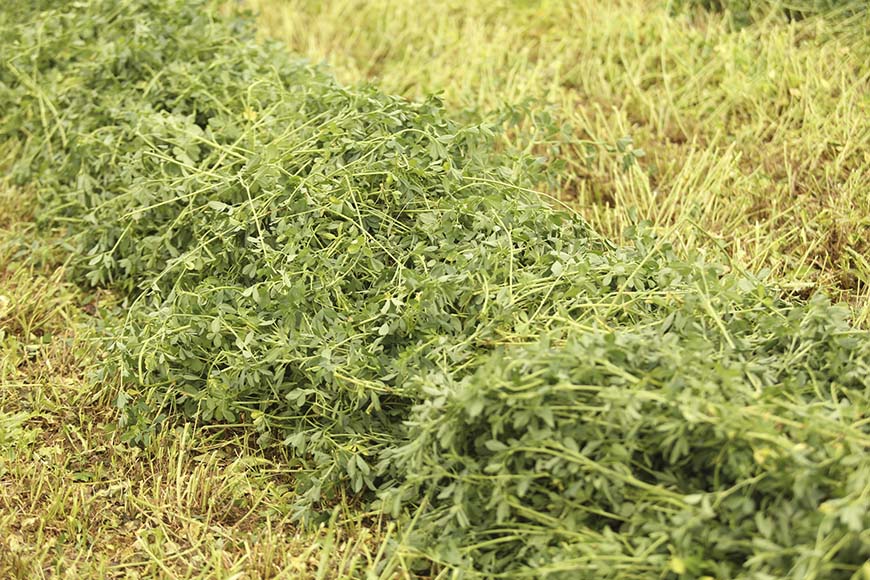6 Ways to Leverage Your Elite Hybrids

Seed represents a substantial portion of your planting budget. If you planted any of the new elite class of corn hybrids from CROPLAN® seed this year, make sure you are managing them adequately to fully optimize their advanced genetics and get the most out of your investment.
Over the past four years, WinField United has learned more about which hybrids offer optimal genetic potential, and we have used those learnings to improve on that potential with each new hybrid class. For example, this year’s new elite corn hybrids are estimated to deliver 2.8 bushels per acre more than last year’s hybrids and 8.5 bushels per acre more than those released three years ago.*
Our Answer Plot® research has demonstrated the value of managing high-performing genetics — for example, planting zinc-treated seed and making in-furrow applications of a plant growth regulator — to optimize ROI and yield potential. As a result, we have formulated these tips to help you realize the possibilities of each hybrid you have purchased. Consult with your trusted advisor to put these recommendations into practice.
1. Get population right.
Plant as early as practical and choose the right population for your respective environment. Use response-to-population scores and Answer Plot performance data to determine optimal populations for your fields. Remember that it’s important to have adequate soil fertility as a prerequisite to high yield potential. Sufficient levels of soil phosphorus, potassium, and sulfur are particularly vital.
2. Make zinc a must.
Corn seedlings need zinc early in their development. That’s why the 2018 CROPLAN elite class of genetics not only offers a distinct genetic advantage, it also comes treated with Advanced-Coating Zinc that promotes excellent early-season emergence, stand establishment and growth.
3. Encourage quick emergence.
Use an in-furrow application of an Ascend® plant growth regulator and starter fertilizer to give your plants a boost. Once the seed is set, adequately feed your plants to foster their genetic potential. Uniformity in plant stands is vital to extract high yield potential from today’s top germplasm. Seed planting depth and plant spacing are key to maximizing a plant’s growing environment.
4. Provide added nutrition.
Because of the high yield potential of our elite class of hybrids, there is often a need for added nutrition at key growth stages. Take adequate and timely tissue samples to learn the nutrient composition and concentration of the plant so you can rest assured you are feeding the proper nutrition needed to push yield potential higher. Take at least two tissue samples — one at V5 to understand early plant development needs, and one before reproductive stages to continue to foster high yield potential. Use response-to-nitrogen scores to determine when and how much nitrogen is needed to maximize genetic potential in your area.
5. Protect against disease.
Protect your elite class of genetics from disease throughout the season, especially during later reproductive stages. Know how the genetics of the elite seed you planted responds to fungicide applications by using response-to-fungicide hybrid scores. Be a good steward of your high-yielding products by timing fungicide applications appropriately, always considering weather and environmental conditions that could be conducive to the spread of disease in the future.
6. Harvest at the optimal time.
Because CROPLAN elite class hybrids offer a yield potential advantage, be sure you capture every bushel of it by harvesting within the window that’s best for your specific environment and geography.
Start your plants right early, feed them throughout the year and protect them adequately to give yourself the best chance of extracting the most value from your elite class of hybrids. By investing in them, you’ve given yourself the best chance to gain more at harvest.
*2017 Answer Plot trial data
Over the past four years, WinField United has learned more about which hybrids offer optimal genetic potential, and we have used those learnings to improve on that potential with each new hybrid class. For example, this year’s new elite corn hybrids are estimated to deliver 2.8 bushels per acre more than last year’s hybrids and 8.5 bushels per acre more than those released three years ago.*
Our Answer Plot® research has demonstrated the value of managing high-performing genetics — for example, planting zinc-treated seed and making in-furrow applications of a plant growth regulator — to optimize ROI and yield potential. As a result, we have formulated these tips to help you realize the possibilities of each hybrid you have purchased. Consult with your trusted advisor to put these recommendations into practice.
1. Get population right.
Plant as early as practical and choose the right population for your respective environment. Use response-to-population scores and Answer Plot performance data to determine optimal populations for your fields. Remember that it’s important to have adequate soil fertility as a prerequisite to high yield potential. Sufficient levels of soil phosphorus, potassium, and sulfur are particularly vital.
2. Make zinc a must.
Corn seedlings need zinc early in their development. That’s why the 2018 CROPLAN elite class of genetics not only offers a distinct genetic advantage, it also comes treated with Advanced-Coating Zinc that promotes excellent early-season emergence, stand establishment and growth.
3. Encourage quick emergence.
Use an in-furrow application of an Ascend® plant growth regulator and starter fertilizer to give your plants a boost. Once the seed is set, adequately feed your plants to foster their genetic potential. Uniformity in plant stands is vital to extract high yield potential from today’s top germplasm. Seed planting depth and plant spacing are key to maximizing a plant’s growing environment.
4. Provide added nutrition.
Because of the high yield potential of our elite class of hybrids, there is often a need for added nutrition at key growth stages. Take adequate and timely tissue samples to learn the nutrient composition and concentration of the plant so you can rest assured you are feeding the proper nutrition needed to push yield potential higher. Take at least two tissue samples — one at V5 to understand early plant development needs, and one before reproductive stages to continue to foster high yield potential. Use response-to-nitrogen scores to determine when and how much nitrogen is needed to maximize genetic potential in your area.
5. Protect against disease.
Protect your elite class of genetics from disease throughout the season, especially during later reproductive stages. Know how the genetics of the elite seed you planted responds to fungicide applications by using response-to-fungicide hybrid scores. Be a good steward of your high-yielding products by timing fungicide applications appropriately, always considering weather and environmental conditions that could be conducive to the spread of disease in the future.
6. Harvest at the optimal time.
Because CROPLAN elite class hybrids offer a yield potential advantage, be sure you capture every bushel of it by harvesting within the window that’s best for your specific environment and geography.
Start your plants right early, feed them throughout the year and protect them adequately to give yourself the best chance of extracting the most value from your elite class of hybrids. By investing in them, you’ve given yourself the best chance to gain more at harvest.
*2017 Answer Plot trial data





